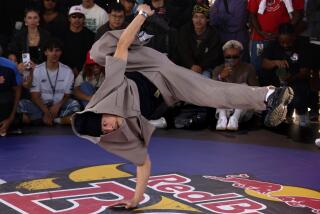In 1974, nudes made news at Venice Beach
Retired lifeguard Nick Steers still remembers the day he helped rescue an injured swimmer at Venice Beach while onlookers gathered around him.
“I’m on my hands and knees and I look around and all I see are crotches” and other private parts, he said. “Everyone was nude.”
As he recalls, the injured swimmer was also devoid of a bathing suit.
It was 1974, the summer of Venice’s nude beach.
Until then, Venice had been a relatively quiet area except for the occasional beat of a bongo drum. This was before the era of the street performers and roller-skaters on Ocean Front Walk.
Suddenly the beach was dotted with bare behinds, “like a constellation of moons turning pink in the sun,” wrote The Times’ Charles Powers.
Pedestrian and airborne traffic increased like never before.
Cameras were everywhere. Even opera glasses.
“It became a ‘freak show,’” author Jeffrey Stanton wrote in “ Venice California: Coney Island of the Pacific.”
The idea of sunbathers doffing their clothes was not new to Southern California. But such a practice was usually confined to isolated spots, such as Black’s Beach in San Diego.
In Venice, the nudeniks were out in the open.
The phenomenon may have been — in part — a rebellion against the establishment (the Vietnam War was not yet over).
But it also appeared to be an outgrowth of the “streaking” craze that had impelled students earlier that spring to run nude across campuses in the East and the South.
The craze, which inspired Ray Stevens’ hit song “The Streak,” quickly spread to the L.A. area.
In Pasadena, three young people clad in nothing but tennis shoes were arrested after sprinting past the visiting Vienna Symphony Orchestra at Ambassador College. A judge let them off with probation but reminded them of an old English saying: “Do anything you want, but don’t do it in the streets or you’ll frighten the horses.”
Stripper Liz Renay was pinched by the law while streaking down Hollywood Boulevard. A jury later found her not guilty, perhaps reasoning that she was rehearsing.
A naked chap even ran onstage during the Academy Award ceremonies that year. Unfazed, actor David Niven drew big laughs from the audience when he commented on the intruder’s “shortcomings.”
And then the focus shifted to Venice Beach. No one knows when, exactly. There was talk that the oglers began showing up after a local news station broadcast a weather report from Venice’s shoreline.
“With the nudists came the news media (Big Brother was REALLY watching this time),” said the local Beachhead newspaper.
The result, Powers wrote, was the odd spectacle of “businessmen, in full dress … breathing hard as they mush through the loose sand.”
Some gawkers gathered on a nearby jetty. “They may watch for an hour at a time, always fully dressed, their arms folded, staring in silence, as if they had stumbled onto an assembly of Martians,” Powers wrote.
Low-flying helicopters were “frequent and leisurely, as if the pilots had decided to pause there to tie their shoelaces,” Powers wrote. “It may soon be necessary to install radar and air-traffic controllers in the lifeguard stands.”
The poor lifeguards — their lives really grew complicated.
“There are some nudes who are incensed when people stare, and the guards not only have to watch people in the water but have to stop confrontations that take place,” lifeguard official William O’Sullivan told The Times.
A gubernatorial race was being waged that summer. Elizabeth Keathley, the nominee of the Peace and Freedom Party, even campaigned in the buff at Venice. (She didn’t win.)
Other politicians embraced the practice less warmly.
Los Angeles City Councilman John Ferraro declared that “the beach is for young people and families, not for people who want to display their wares in public.”
In mid-July, the L.A. City Council passed an ordinance banning nude sunbathing.
The session was interrupted by a spectator who disrobed “in view of a stunned overflow audience of nearly 400,” The Times said.
The measure was signed by Mayor Tom Bradley, who explained that the “bulk” of his mail on the subject was “against nudity.”
A proposal to establish “clothing-optional zones” was rejected.
Venice’s nude beach ceased to be.
“But it was too late to turn back the clock,” wrote historian Stanton. “For people had discovered that Venice still existed and was actually a relatively safe place to visit during the day.”
It was the beginnings of Venice as a tourist attraction.
These days, you probably wouldn’t find oglers snapping photos of sunbathers from the jetty, though.
A reporter who randomly surveyed Venice Beach last week couldn’t find a single naked beachgoer — or, for that matter, a single naked gubernatorial candidate.
More to Read
Sign up for Essential California
The most important California stories and recommendations in your inbox every morning.
You may occasionally receive promotional content from the Los Angeles Times.










